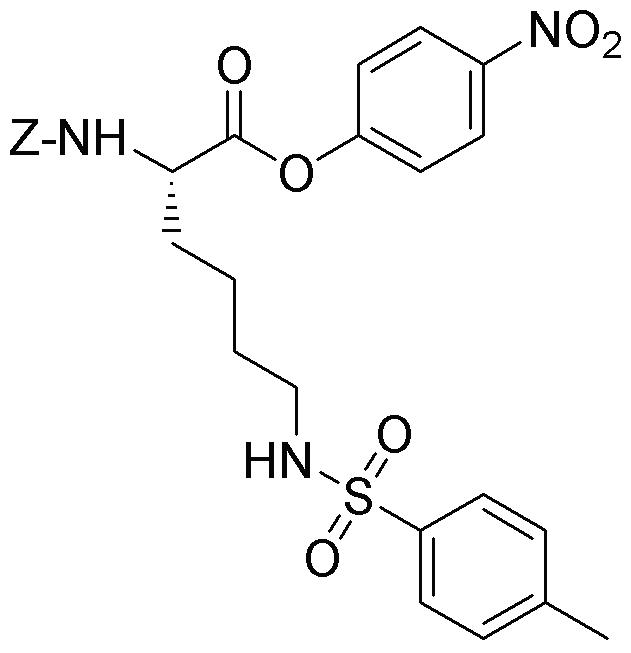Na-Z-Ne-4-toluenesulfonyl-L-lysine 4-nitrophenyl ester is widely utilized in research focused on:
- Biochemical Research: This compound serves as a valuable tool in studying enzyme activity and protein interactions, particularly in the context of lysine modifications.
- Drug Development: It plays a role in the synthesis of peptide-based drugs, offering a means to modify therapeutic agents for enhanced efficacy and specificity.
- Diagnostics: The compound is used in the development of assays for detecting specific proteins, aiding in disease diagnosis and biomarker identification.
- Material Science: It finds applications in creating functional materials, such as polymers with tailored properties for use in various industrial applications.
- Research Reagents: As a reagent, it is essential in organic synthesis, allowing researchers to explore new chemical pathways and develop innovative compounds.
General Information
Properties
Safety and Regulations
Applications
Na-Z-Ne-4-toluenesulfonyl-L-lysine 4-nitrophenyl ester is widely utilized in research focused on:
- Biochemical Research: This compound serves as a valuable tool in studying enzyme activity and protein interactions, particularly in the context of lysine modifications.
- Drug Development: It plays a role in the synthesis of peptide-based drugs, offering a means to modify therapeutic agents for enhanced efficacy and specificity.
- Diagnostics: The compound is used in the development of assays for detecting specific proteins, aiding in disease diagnosis and biomarker identification.
- Material Science: It finds applications in creating functional materials, such as polymers with tailored properties for use in various industrial applications.
- Research Reagents: As a reagent, it is essential in organic synthesis, allowing researchers to explore new chemical pathways and develop innovative compounds.
Documents
Safety Data Sheets (SDS)
The SDS provides comprehensive safety information on handling, storage, and disposal of the product.
Product Specification (PS)
The PS provides a comprehensive breakdown of the product’s properties, including chemical composition, physical state, purity, and storage requirements. It also details acceptable quality ranges and the product's intended applications.
Certificates of Analysis (COA)
Search for Certificates of Analysis (COA) by entering the products Lot Number. Lot and Batch Numbers can be found on a product’s label following the words ‘Lot’ or ‘Batch’.
*Catalog Number
*Lot Number
Certificates Of Origin (COO)
This COO confirms the country where the product was manufactured, and also details the materials and components used in it and whether it is derived from natural, synthetic, or other specific sources. This certificate may be required for customs, trade, and regulatory compliance.
*Catalog Number
*Lot Number
Safety Data Sheets (SDS)
The SDS provides comprehensive safety information on handling, storage, and disposal of the product.
DownloadProduct Specification (PS)
The PS provides a comprehensive breakdown of the product’s properties, including chemical composition, physical state, purity, and storage requirements. It also details acceptable quality ranges and the product's intended applications.
DownloadCertificates of Analysis (COA)
Search for Certificates of Analysis (COA) by entering the products Lot Number. Lot and Batch Numbers can be found on a product’s label following the words ‘Lot’ or ‘Batch’.
*Catalog Number
*Lot Number
Certificates Of Origin (COO)
This COO confirms the country where the product was manufactured, and also details the materials and components used in it and whether it is derived from natural, synthetic, or other specific sources. This certificate may be required for customs, trade, and regulatory compliance.


